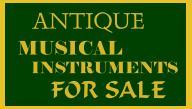| |
|
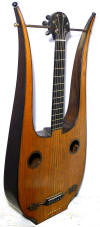 |
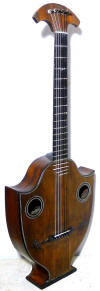 |
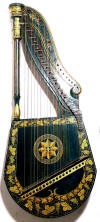 |
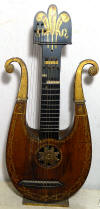 |
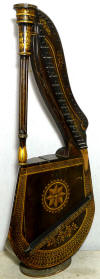 |
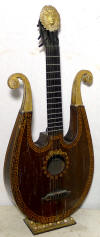 |
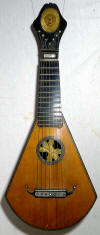 |
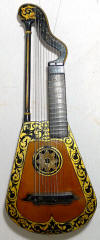 |
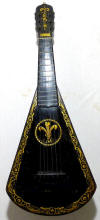 |
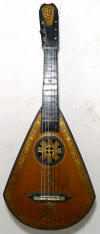 |
|
| |
| |
|
About the last quarter of the 18th
century saw a change in fashion of not only costume,
architecture but also of musical instruments. To enhance the
withdrawing room came instruments to compliment the
decor. In addition the Gothic style harps and pianoforte
came an introduction of various hybrid guitars and harps,
made to play but also be decorative. Making of this style of
instrument mostly disappeared by the 1830s as fashions
changed. Just a few example illustrated here. |
|
|
|
|
|
|
| |
|
|
| |
|
|
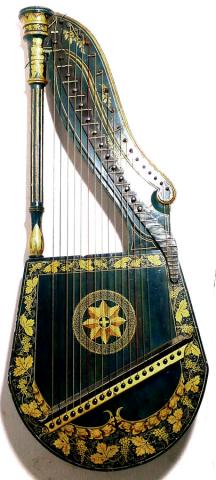 |
Dital Harp
An Edward Light dital Harp
circa 1820 and another. Inscribed Light. Foley Place London.
Patent Dital Harp. No 10. Nineteen strings. The ditals
being button to depress at the top rear to obtain half
notes. (See lower right pictures). A
form of lap harp. Strangely the harp is strung the
opposite of a harp with the high strings furthest away (I
suppose unless you are left handed) Certainly
an instrument form posing in front of guests. Overall length
83cm. The example to the left has a base fitted for free
standing |
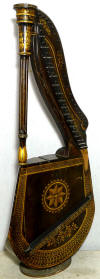 |
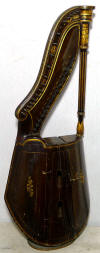 |
|
|
 |
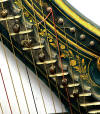 |
 |
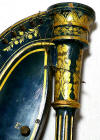 |
|
|
| |
| |
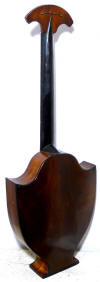 |
A French guitar of about
1830 possibly by Germain. Paris. With ivory or bone frets,
ebony veneered neck, steel clock key tuners and twin banded
sound holes. |
 |
|
 |
A typical harp guitar circa
1815 possibly by Levien. With 6 fretted strings and 6 harp
strings, three with semi tone levers. |
 |
|
|
 |
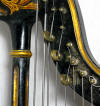 |
|
| |
|
|
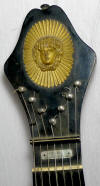 |
 |
 |
An eight string harp guitar
by Levien, Paris (left) |
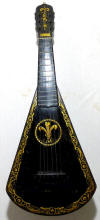 |
 |
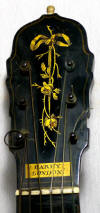 |
|
|
A six string bell shaped
guitar by Barry. London. reminiscent to bell shaped citterns
/ English guitars |
|
|
|
|
|
|
Soon to come a page about other
harp guitars and theorbo lute guitars |
| |
